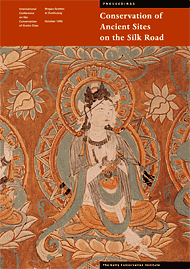Season Tse presented a talk entitled “Microfade testing: 19th century iron gall inks” on behalf of her co-authors Sherry Guild, Valeria Orlandini and Maria Trojan-Bedynski. Tse started with a summary of the use of microfade testers (MFT) at the Canadian Conservation Institute (CCI), which began in 2005, then discussed MDT analysis of the effects of typical aqueous treatments used to reduce iron gall ink light sensitivity. This work was conducted in collaboration with the University of Winnipeg, where hyperspectral imaging of each sample was completed.
This research was initiated by a request to conserve a handwritten dedication by Queen Victoria to the Library of Canada, dating to 1864. The dedication is preserved in a book currently in the collections of the Library of Canada. The dedication, made using iron gall ink, was analyzed using MDT instrumentation near the signature to measure the signature inks, other text inks and the paper substrate. Most inks, including the signature, are characterized as blue wool (BW) 2-3, or, have high sensitivity. Areas around the text do not show bad fading, and overall, the color shift of samples appears consistent. Distinct patterns in color shift associated with sampled inks were identified that may provide information regarding possible ink mixtures and application methods.
In an effort to test the efficacy of aqueous treatment effects (alkaline water wash, Ca-/Mg-bicarbonate, ethanol + simmering, ethanol + phytate) on iron gall inks, experimental samples were treated and analyzed with MFT instrumentation; then heat and light aged after treatment and analyzed again. Generally, bicarbonate and simmering treatments have similar fading patterns, while phytate treatments had the least light sensitivity and very little change in spectral curves.
Future work at CCI will include using portable MFT instrumentation with color monitoring for onsite use and correlating collected data with the CCI Light Damage Calculator. Developed by Stefan Michalski and soon to be included on the CCI website, this tool allows the user to input data to determine JND using a variety of criteria including the presence/absence of UV. The light damage calculator enables users to make informed decisions during exhibition and curation activities.
Bruce Ford, on behalf of his co-author Nicki Smith, discussed “Exhibition lighting decisions and micro-fading at the National Museum of Australia”, as they have been developed at this social history museum. Initially, the museum utilized light exposure guidelines as delineated by Victoria and Albert Museum publications. However, these guidelines became problematic and expensive to execute during typical museum practice. The V&A guidelines included little delineation between material groups and required that exhibition artifact rotate off-exhibit every two years. New light exposure guidelines were needed and critical, as artifact display frequency at the National Museum of Australia is related to both significance (aesthetic/artistic, historic, scientific, etc.) and expected future display history.
The authors purchased and modified a commercial instrument by adding an x/y stage to eliminate/minimize the effect of material expansion coefficients that can influence color changes. Based on MDT results, the authors developed a two-tier lighting framework that identified materials that fade quickly. All object materials were allocated to new fading rate categories to develop material specific lighting strategies. As a result, significant artifacts, previously thought to be too sensitive to be exhibited, are now on exhibit including Phar Lap’s heart, a famous racehorse that raced during the early 20th century. Furthermore, the authors were able to identify and select sensitive dye/pigment compositions.
Ford concluded that users must always be cautious during interpretation of MDT results and should always report measurement in terms of blue wool ranges. Conservation initiatives should not be motivated purely by financial considerations. The accuracy of data and interpretation is critical to maintain conservation authority, particularly since artifact significance is a matter of opinion and is time dependent.
Following the morning of MFT talks, all authors, who spoke during morning session, discussed the technique and answered audience questions. Issues of terminology and how various values are calculated were discussed, as well as MDT curve interpretation. Finally, authors discussed possible future research projects including the need to calibrate experimental results to the real world context of museum objects exhibited using gallery lighting. This research will only be achievable with longitudinal study (10 years).




